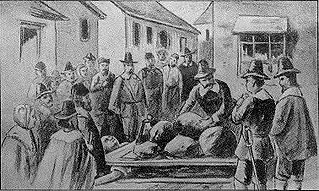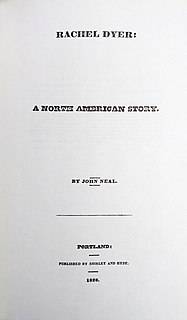
Witchcraft traditionally means the use of magic or supernatural powers to harm others. A practitioner is a witch. In medieval and early modern Europe, where the term originated, accused witches were usually women who were believed to have attacked their own community, and often to have communed with evil beings. It was thought witchcraft could be thwarted by protective magic or counter-magic, which could be provided by cunning folk or folk healers. Suspected witches were also intimidated, banished, attacked or killed. Often they would be formally prosecuted and punished, if found guilty or simply believed to be guilty. European witch-hunts and witch trials in the early modern period led to tens of thousands of executions. In some regions, many of those accused of witchcraft were folk healers or midwives. European belief in witchcraft gradually dwindled during and after the Age of Enlightenment.

A witch-hunt, or a witch purge, is a search for people who have been labeled witches or a search for evidence of witchcraft. The classical period of witch-hunts in Early Modern Europe and Colonial America took place in the Early Modern period or about 1450 to 1750, spanning the upheavals of the Reformation and the Thirty Years' War, resulting in an estimated 35,000 to 50,000 executions. The last executions of people convicted as witches in Europe took place in the 18th century. In other regions, like Africa and Asia, contemporary witch-hunts have been reported from sub-Saharan Africa and Papua New Guinea, and official legislation against witchcraft is still found in Saudi Arabia and Cameroon today.

Salem is a historic coastal city in Essex County, Massachusetts, located in the North Shore region. Continuous settlement by Europeans began in 1626 with English colonists. Salem would become one of the most significant seaports trading commodities in early American history.

The Salem witch trials were a series of hearings and prosecutions of people accused of witchcraft in colonial Massachusetts between February 1692 and May 1693. More than two hundred people were accused. Thirty were found guilty, nineteen of whom were executed by hanging. One other man, Giles Corey, was pressed to death for refusing to plead, and at least five people died in jail.

Ergotism is the effect of long-term ergot poisoning, traditionally due to the ingestion of the alkaloids produced by the Claviceps purpurea fungus—from the Latin clava "club" or clavus "nail" and -ceps for "head", i.e. the purple club-headed fungus—that infects rye and other cereals, and more recently by the action of a number of ergoline-based drugs. It is also known as ergotoxicosis, ergot poisoning, and Saint Anthony's fire.
Abigail Williams was an 11- or 12-year-old girl who, along with nine-year-old Betty Parris, was among the first of the children to falsely accuse their neighbors of witchcraft in 1692; these accusations eventually led to the Salem witch trials.

A witch's mark or devil's mark was a bodily mark that witch-hunters believed indicated that an individual was a witch, during the height of the witch trials. The beliefs about the mark differ depending on the trial location and the accusation made against the witch. Evidence of the witch's mark is found earliest in the 16th century, and reached its peak in 1645, then essentially disappeared by 1700. The Witch or Devil's mark was believed to be the permanent marking of the Devil on his initiates to seal their obedience and service to him. He created the mark by raking his claw across their flesh, or by making a blue or red brand using a hot iron. Sometimes, the mark was believed to have been left by the Devil licking the individual leaving a death skull pattern in the skin. The Devil was thought to mark the individual at the end of nocturnal initiation rites. The witch's teat was a raised bump somewhere on a witch's body. It is often depicted as having a wart-like appearance.

Giles Corey was an English-born American farmer who was accused of witchcraft along with his wife Martha Corey during the Salem witch trials. After being arrested, Corey refused to enter a plea of guilty or not guilty. He was subjected to pressing in an effort to force him to plead—the only example of such a sanction in American history—and died after three days of this torture. Because Corey refused to enter a plea, his estate passed on to his sons instead of being seized by the local government.

Sabrina the Teenage Witch is a comic book series published by Archie Comics about the adventures of a fictional American teenager named Sabrina Spellman. Sabrina was created by writer George Gladir and artist Dan DeCarlo, and first appeared in Archie's Madhouse #22. Storylines of the character at elementary-school-age also appear under the title "Sabrina -- That Cute Little Witch" in almost all of the Little Archie comics.

Samuel Parris was the Puritan minister in Salem Village, Massachusetts, during the Salem witch trials. He was also the father of one of the afflicted girls, and the uncle of another.

Katrina Elizabeth DiCamillo is an American children's fiction author. She has published over 25 novels, including Because of Winn-Dixie, The Tiger Rising, The Tale of Despereaux, The Miraculous Journey of Edward Tulane, The Magician's Elephant, the Mercy Watson series, and Flora & Ulysses. Her books have sold around 37 million copies. Four have been developed into films and two have been adapted into musical settings. Her works have won various awards; The Tale of Despereaux and Flora & Ulysses won the Newbery Medal, making DiCamillo one of six authors to have won two Newbery Medals.

Bridget Bishop was the first person executed for witchcraft during the Salem witch trials in 1692. Nineteen were hanged, and one, Giles Corey, was pressed to death. Altogether, about 200 people were tried.

Stacy Madeleine Schiff is an American former editor, essayist, and author of five biographies. Her biography of Vera Nabokov won the 2000 Pulitzer Prize in biography. Schiff has also written biographies of French aviator and author of The Little Prince, Antoine de Saint-Exupéry, colonial American-era polymath and prime mover of America's founding, Benjamin Franklin, ancient Egyptian queen Cleopatra, and the important figures and events of the Salem Witch Trials of 1692–93 in colonial Massachusetts.

Mercy Lewis was an accuser during the Salem Witch Trials. She was born in Falmouth, Maine. Mercy Lewis, formally known as Mercy Allen, was the child of Philip Lewis and Mary (Cass) Lewis.

Cultural depictions of the Salem witch trials abound in art, literature and popular media in the United States, from the early 19th century to the present day. The literary and dramatic depictions are discussed in Marion Gibson's Witchcraft Myths in American Culture and see also Bernard Rosenthal's Salem Story: Reading the Witch Trials of 1692
Medical explanations of bewitchment, especially as exhibited during the Salem witch trials but in other witch-hunts as well, have emerged because it is not widely believed today that symptoms of those claiming affliction were actually caused by bewitchment. The reported symptoms have been explored by a variety of researchers for possible biological and psychological origins.
Thomas Maule, was a prominent Quaker in colonial Salem, Massachusetts.
Thomas Brattle was an American merchant who served as treasurer of Harvard College and member of the Royal Society. He is known for his involvement in the Salem Witch Trials and the formation of the Brattle Street Church.
Margo Burns is a historian specializing in the Salem witch trials and related events, especially those in North Andover. She is an Associate Editor and Project Manager of the book Records of the Salem Witch-Hunt. She resides in New Hampshire.

Rachel Dyer: A North American Story is a Gothic historical novel by American writer John Neal. Published in 1828 in Maine, it is the first bound novel about the Salem witch trials. Though it garnered little critical notice in its day, it influenced works by Nathaniel Hawthorne, Henry Wadsworth Longfellow, John Greenleaf Whittier, and Walt Whitman. It is best remembered for the American literary nationalist essay, "Unpublished Preface", that precedes the body of the novel.















